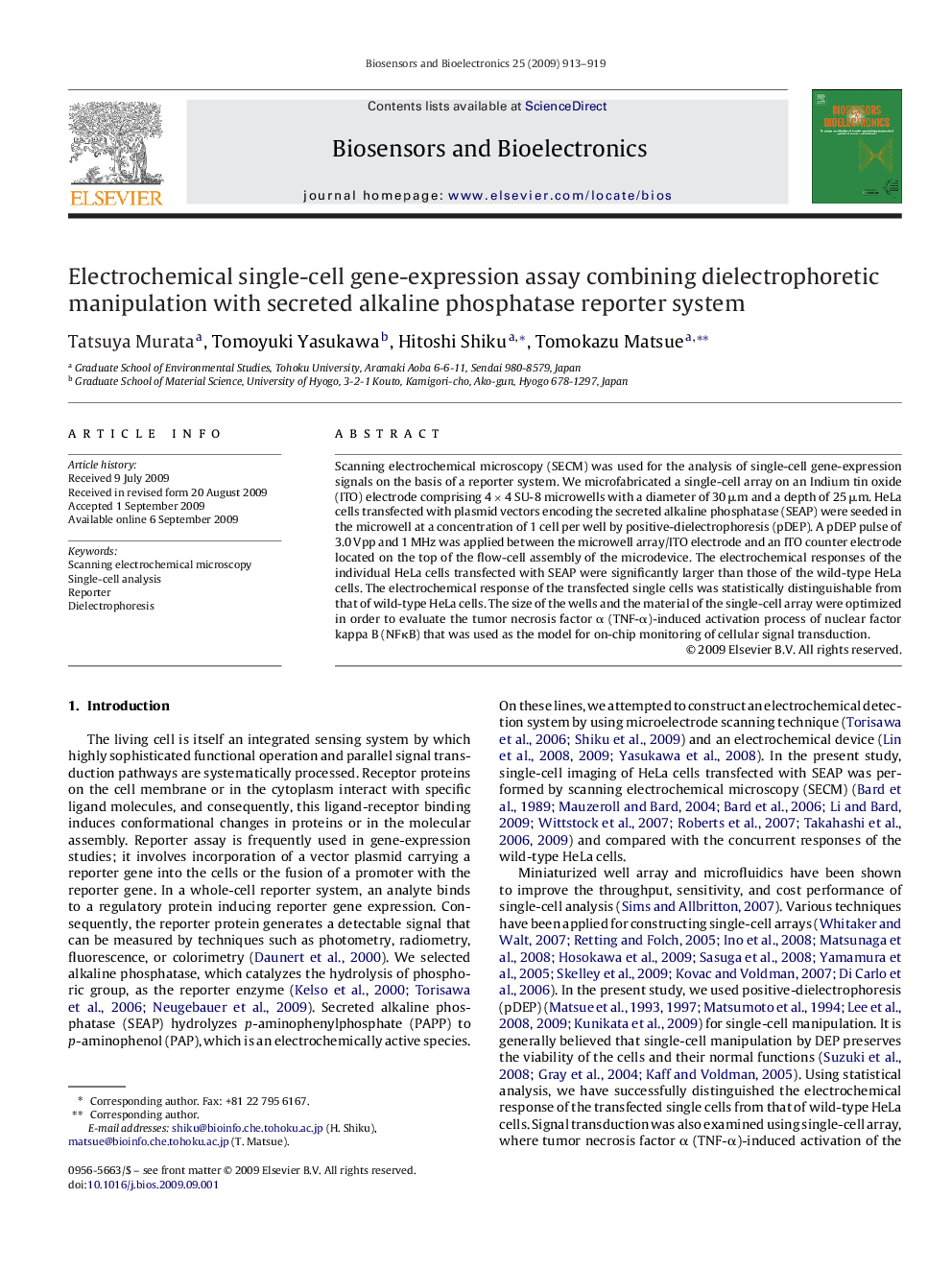| Article ID | Journal | Published Year | Pages | File Type |
|---|---|---|---|---|
| 868104 | Biosensors and Bioelectronics | 2009 | 7 Pages |
Scanning electrochemical microscopy (SECM) was used for the analysis of single-cell gene-expression signals on the basis of a reporter system. We microfabricated a single-cell array on an Indium tin oxide (ITO) electrode comprising 4 × 4 SU-8 microwells with a diameter of 30 μm and a depth of 25 μm. HeLa cells transfected with plasmid vectors encoding the secreted alkaline phosphatase (SEAP) were seeded in the microwell at a concentration of 1 cell per well by positive-dielectrophoresis (pDEP). A pDEP pulse of 3.0 Vpp and 1 MHz was applied between the microwell array/ITO electrode and an ITO counter electrode located on the top of the flow-cell assembly of the microdevice. The electrochemical responses of the individual HeLa cells transfected with SEAP were significantly larger than those of the wild-type HeLa cells. The electrochemical response of the transfected single cells was statistically distinguishable from that of wild-type HeLa cells. The size of the wells and the material of the single-cell array were optimized in order to evaluate the tumor necrosis factor α (TNF-α)-induced activation process of nuclear factor kappa B (NFκB) that was used as the model for on-chip monitoring of cellular signal transduction.
